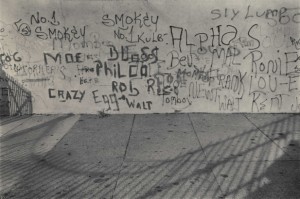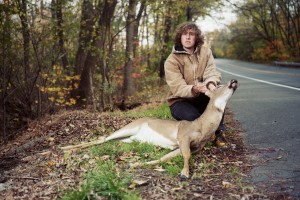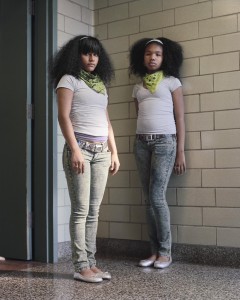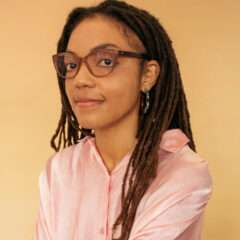This week’s Weekly has my review of photography shows at the Philadelphia Museum of Art and the Philadelphia Photo Art Center.
From Woodmere Art Museum to the Print Center and places in between, Philadelphia celebrates the 170th year of photography this fall with exhibits that showcase the medium’s origins and point to the region’s strength in producing leaders in the field. Here’s a peek at two of the shows.

Eight local artists who experimented with processes, techniques and subject matter are featured in Common Ground, a show of work from the 1960s and 70s. Photography back then was just beginning to get credibility in galleries and museums and in art schools that began offering photography as a major.
Large scale prints are a hallmark of today’s photography but most of the works in Common Ground are small — and most are black and white since color photography was looked down on as less artistic. Regardless of format, Common Ground’s photos are uniformly human-focused; their ambiance upbeat, inquisitive and energetic.
Catherine Jensen’s experimental works from 1979 stand out for their colors and large format and for their radical mix of photography and sculpture. Jensen transferred photographic images onto cloth via color xerography. She then stitched and stuffed her cloth images as 3D trompe l’oeil objects (a tea set; a table; a camera; some family pictures in frames). In their domestic content, their “crafted-ness” and their playful use of trompe l’oeil, these works have an uncanny alliance with work by today’s young artists.

Other back to the future echoes include Carol Taback’s photo booth collages from the late 70s and Emmett Gowin’s psychologically-charged portraits of his wife’s family from 1969-70. Taback — who had a photo booth in her studio — turned the human figure into abstract repeat patterns that prefigure Photoshop’s “mosaic” feature; Gowin’s intense portraits seem precursors of Zoe Strauss and Sarah Stolfa, both of whom strive for truth and confrontation in their portraits.
Street photography must include some grafitti and Will Brown’s shot of school yard grafitti from 1967 — names spelled out properly and nicknames like “Crazy” and “Smokey” — marks itself as from a kinder, gentler era rather than our own. Ray Metzger, a magician of light and dark, turned 60s Philadelphia into eerie abstractions in his tiny photos. Local photo leaders — and teachers — Will Larson, Sol Mednick and David Lebe round out the show.

Twenty-one young emerging photographers also focus on the human in Next: Emerging Philadelphia Photographers at Philadelphia Photo Arts Center. What’s immediately different in “Next” is the color, the large size prints and in many cases the deadpan affect that evokes a been there done that world-weariness. If earlier generations of photographers mirrored the exuberance of their times, today’s photographers record human uneasiness and depression.

Jaime Alvarez’s “168_001 (Spain Rest Stop, outside of Leon)” for example, is a mystery. A shot of a grassy hilltop on a sunny day features an electric pole in the foreground. Is the pole the subject? Is this an ironic comment on beauty? Both snapshot-like and documentary, the photo guards its point of view. Phil Jackson’s “Davis with deer, Upstate NY 2007” likewise cloaks its meaning. A young man by the side of a country road stoops down to hold up the head of a dead deer. The shot is operatic in content (loss of life; solidarity between young man and young deer). Yet the photo is inscrutable. Portraits by Hannah Price, Joshua Lanzara and Kyle Ferino deserve mention for their great empathy.
Next: Emerging Philadelphia Photographers, to November 29, Philadelphia Photo Art Center, 1400 N. American St., Suite 103, 215 232 5678.
Common Ground: Eight Philadelphia Photographers in the 1960s and 1970s, through Jan. 31, 2010. Philadelphia Museum of Art, 26th and Ben Franklin Parkway, 215









